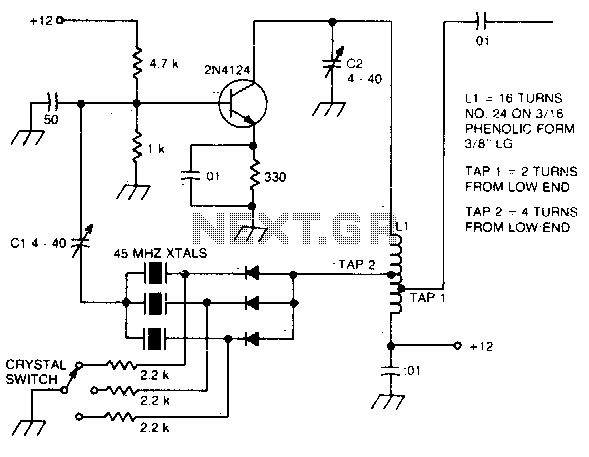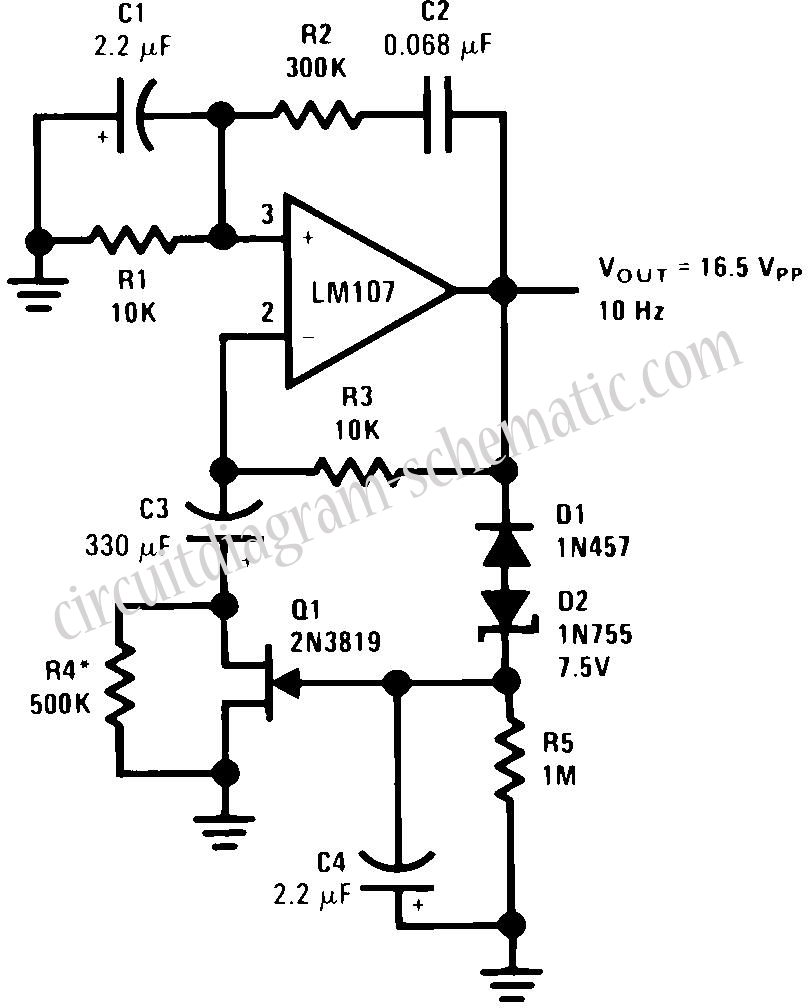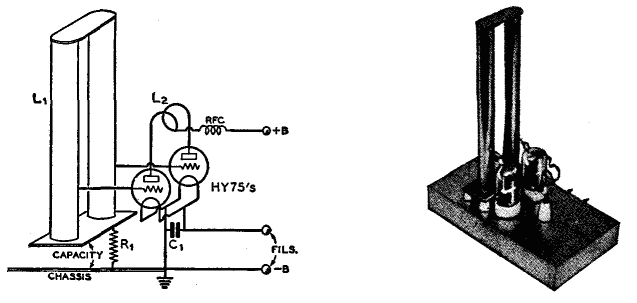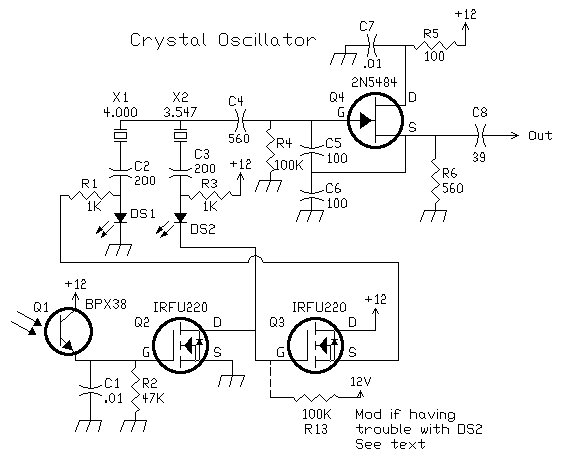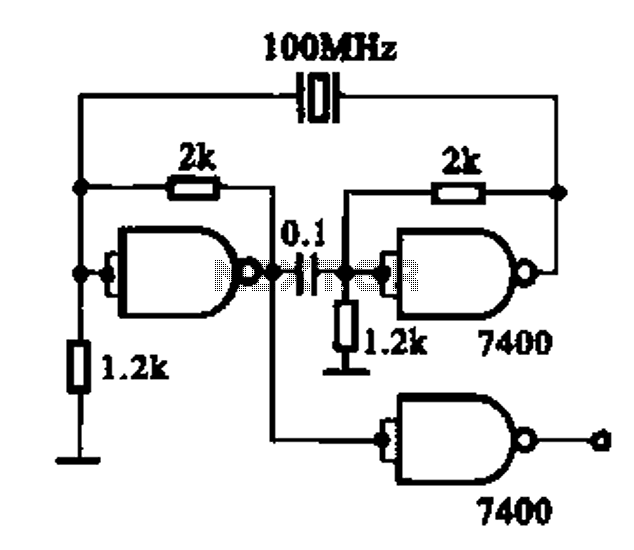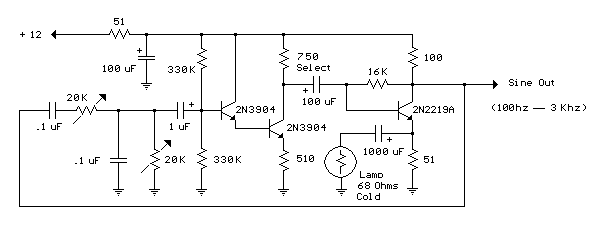
Square wave oscillator
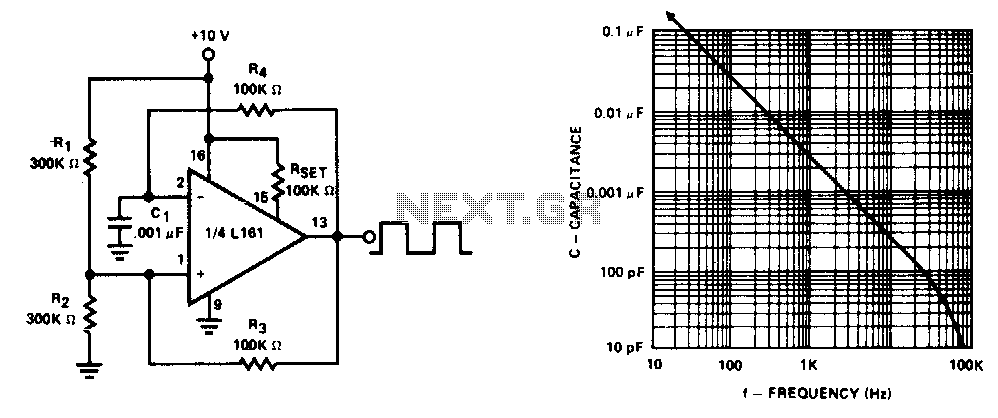
This generator operates at frequencies exceeding 100 kHz. The lower frequency limit is determined by capacitor Cl. Additionally, the frequency remains constant for supply voltages down to +5 V.
The generator described is a versatile electronic oscillator capable of producing high-frequency signals exceeding 100 kHz. The design's lower frequency limit is influenced by the capacitance value of capacitor Cl, which plays a crucial role in defining the timing characteristics of the oscillator circuit. The component values selected for Cl and any associated resistors will dictate the frequency response and stability of the oscillator.
The generator's ability to maintain a constant frequency across varying supply voltages, down to a minimum of +5 V, indicates a well-regulated design that ensures reliable operation even under low-voltage conditions. This feature is particularly beneficial in battery-powered applications where voltage levels may fluctuate as the battery discharges.
In practical applications, this generator can be utilized in various fields such as signal processing, communication systems, and clock generation for digital circuits. The stability and performance of the oscillator can be further enhanced by incorporating feedback mechanisms and tuning elements, allowing for precise frequency adjustments as required by specific applications. Proper selection of passive components, such as resistors and capacitors, as well as the implementation of temperature compensation techniques, can also contribute to the overall reliability and accuracy of the generated signals.This generator is operable to over 100 kHz. The low frequency limit is determined by Cl Frequency is constant for supply voltages down to +5 V. 🔗 External reference
The generator described is a versatile electronic oscillator capable of producing high-frequency signals exceeding 100 kHz. The design's lower frequency limit is influenced by the capacitance value of capacitor Cl, which plays a crucial role in defining the timing characteristics of the oscillator circuit. The component values selected for Cl and any associated resistors will dictate the frequency response and stability of the oscillator.
The generator's ability to maintain a constant frequency across varying supply voltages, down to a minimum of +5 V, indicates a well-regulated design that ensures reliable operation even under low-voltage conditions. This feature is particularly beneficial in battery-powered applications where voltage levels may fluctuate as the battery discharges.
In practical applications, this generator can be utilized in various fields such as signal processing, communication systems, and clock generation for digital circuits. The stability and performance of the oscillator can be further enhanced by incorporating feedback mechanisms and tuning elements, allowing for precise frequency adjustments as required by specific applications. Proper selection of passive components, such as resistors and capacitors, as well as the implementation of temperature compensation techniques, can also contribute to the overall reliability and accuracy of the generated signals.This generator is operable to over 100 kHz. The low frequency limit is determined by Cl Frequency is constant for supply voltages down to +5 V. 🔗 External reference
